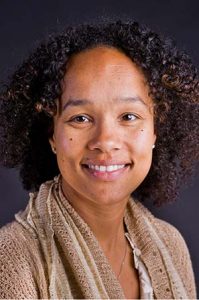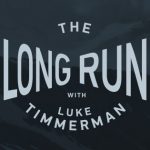Increasing Vaccine Confidence With the Tools That Got Us This Far

Michele Andrasik, PhD. Director, Social & Behavioral Sciences and Community Engagement
HIV Vaccine Trials Network; Affiliate Assistant Professor, Global Health, University of Washington
By Michele Andrasik, Sally Bock, Stephaun Wallace and Michael Ferguson
This month, when the news was full of stories of vaccine scarcity and images of long lines of people hoping to get immunized, the COVID-19 Prevention Network and Fred Hutch ran TV ads during the Super Bowl for people still hesitant about the vaccine in Washington state.
When given this rare opportunity to reach so many people, we were careful about what to say and not to say.
There was no scolding or chiding or pleading.
The narrator of the ad invites people to engage, and empowers them to come to their own conclusion. “You may still be doubtful. That’s OK. We can work together to get answers to your questions,” the narrator says.
Why seek to build more demand during a vaccine shortage?
In one word: equity.
COVID-19 vaccinations in Washington state began on Dec. 14. As of Feb. 8 — 56 days later — a little over 10% of Washington state residents received their 1st dose and slightly less than 3% were fully vaccinated.
The large majority of those who have gotten their first shot (66.6%) and who have gotten fully vaccinated (65.8%) are White.
Only 18% of individuals initiating vaccinations are from BIPOC communities. The people who are suffering disproportionately from the pandemic are also less likely to get the vaccine.
For BIPOC communities hardest hit by COVID-19, vaccination rates are disturbingly low, particularly among Native Hawaiian/Pacific Islander (0.5% of the vaccinated population), American Indian/Alaska Native (2.2%), Black/African American (2.2%), Hispanic/Latino/a (4.7%) and Asian Americans (8.3%).
Although Black, Indigenous and People of Color (BIPOC) represent 34.6% of the total population of Washington state, as is the case nationally, these groups carry the greatest COVID-19 burden, representing 52% of all COVID-19 cases, 47% of COVID-19 hospitalizations and 29% of COVID-19 deaths.
Among BIPOC communities, the Hispanic/Latino/a community is most disparately impacted by COVID-19, representing 32% of all COVID-19 cases, 24% of hospitalizations and 12% of deaths.
The rates are also disproportionately high among Asian, Black, Native Hawaiian, Pacific Islander, American Indian and Alaska Native communities. These rates are likely higher as testing is limited across the state and a significant number of confirmed cases, hospitalizations and deaths are missing racial and ethnic information.
What does it take to build trust and confidence in vaccines?
The creative strategy behind the vaccine confidence campaign is to validate the questions and concerns of the hesitant, and to empower people to get back to the things COVID-19 has taken away—gathering with family and friends, freedom from masks and worry about the virus, and reopening businesses.
But ads alone won’t build confidence. It takes open and transparent dialogue, hearing from trusted messengers, and assurance that the research behind the vaccines is thorough and that people that look like them have been part of it.
The campaign is supported by a website — PreventCovidWA.org — to continue the dialogue. It uses an integrated media strategy with animated videos breaking down the science behind the vaccines, “Ask An Expert” videos featuring the diverse physicians and researchers who led the Phase III vaccine trials, and testimonials from people who volunteered for studies and people who have been vaccinated.
With deep listening through digital channels and on-the-ground community engagement, the content is dynamic. It’s responsive to community conversation as the scientific narrative unfolds and changes and new and novel misinformation and myths arise.
These aren’t just strategies suggested by audience research. These are the strategies the COVID-19 Prevention Network (CoVPN) has been developing and refining since spring 2020 when it began preparing for Phase III COVID-19 vaccine trials. Those studies were conducted at unprecedented speed and scale and with some of the highest representation of BIPOC people ever.
Pivoting to the pandemic
The CoVPN was formed in April 2020. Tony Fauci turned to the clinical trial networks the NIH had established for HIV/AIDS and charged them with conducting large scale Phase III trials for COVID-19 vaccines being developed under what came to be called Operation Warp Speed.
One of those leaders was Larry Corey, renowned virologist, head of the HIV Vaccine Trial Network and past president and director of Fred Hutch. We were well-positioned for this work based on years of experience in HIV vaccine trial work.
Immediately, the HIV Vaccine Trials Network (HVTN) Community Engagement and External Relations teams began reaching out to longstanding community partners to learn more about the impact of COVID-19 in their respective communities, to better understand COVID-19 fears and uncertainty, and to identify what information was needed to ensure that communities had the resources they needed to make informed decisions about participation in the vaccine trials in the short term and vaccine acceptability and uptake in the long term.
Priority populations — older adults (65+), Black, Latino/a/Hispanic, Indigenous and People of Color — have been the focus of these efforts for months. Strong community partnerships — rooted in bidirectional communication, trust and reciprocity — were the cornerstones of the plan.
A few weeks into the new CoVPN efforts, a strategic communications and marketing effort was launched to extend out from the community-based work. A creative partnership was formed among CoVPN leadership and the agencies Socialisssima and Sam Bonds Creative, who brought their deep expertise in BIPOC consumer mindsets to develop a mass media campaign that was both national and localized.
The community engagement plan focused on increasing awareness and knowledge. We sought to build trust by lifting up the voices of people with lived experiences. Our community-based researchers listened carefully to the concerns being raised. The campaign sought to address the common fears, uncertainty, isolation, mistrust and misinformation by offering hope, a way to end the uncertainty and a call to action.
The Super Bowl ad reflects this emphasis — it features real people who might look like you and have questions and concerns. Those questions and concerns are dealt with respectfully.

People working to build vaccine confidence in Washington state. From left to right: Sally Bock, senior director, marketing, CoVPN; Stephaun Wallace, director of external relations, CoVPN; Michael Ferguson, director of marketing, CoVPN; Norberto Zylberberg, founder, Socialisssima; Sam Bonds, principal, Sam Bonds Creative
Lessons from clinical study recruitment
All of these efforts to engage community built a strong foundation for the Washington state effort.
Then we got a bit lucky.
When our CBS affiliate reached out on short notice with available Super Bowl commercial space, we were able to produce a strategic and emotionally on-target 30-second Public Service Announcement in just days.
Of course, a Super Bowl ad is just one opportunity to spread the word. We also partnered with the Washington State Department of Health to develop a user-friendly vaccination website specific to Washington state – PreventCovidWA.org – where people from across the state can obtain information about available vaccines, hear testimonials from people who participated in the vaccine trials and from people who have been vaccinated, and schedule a vaccination appointment.
Partnering with community and working together, with all members providing direction and guidance, is what ensured equity and inclusion in the COVID-19 vaccine clinical trials.
This approach worked before – it is what made the vaccine trials as diverse as they were.
It IS the same approach that will help us achieve equity and inclusion in this vaccination campaign.
For more information on the PreventCovidWA campaign, check Instagram and Facebook.




